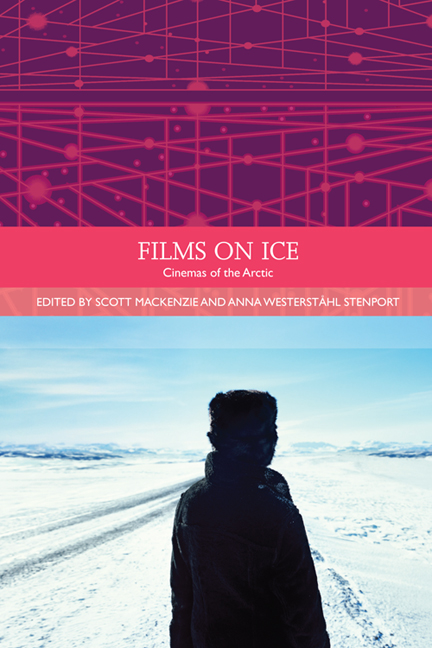Book contents
PART I - GLOBAL INDIGENEITY
Published online by Cambridge University Press: 05 September 2016
Summary
This first section of the book addresses global indigenous film and video- making practices in the transnational Arctic. Films on Ice represents the first instance that the multiple cinematic traditions from various indigenous cultures and regions of the Arctic are placed in dialogue with one another. These works encompass a wide variety of styles and genres, addressing the history of indigenous cultures, the relationship between insider and outsider representation, and indigenous filmmakers’ appropriation of Global Hollywood storytelling strategies. The first chapter, Marian Bredin's ‘“Who Were We? And What Happened to Us?”: Inuit Memory and Arctic Futures in Igloolik Isuma Film and Video’ analyses the history of one of the most successful indigenous filmand video-making groups, Nunavut's Isuma. Bredin charts the emergence of this group, addressing the historical limitations on Inuit filmmaking in Canada, and considers the impact of Isuma's works on both indigenous filmmaking and global art cinema. Taking philosopher Charles Taylor's concept of the ‘politics of recognition’ as a starting point, Pietari Kääpä, in his chapter ‘Northern Exposures and Marginal Critiques: The Politics of Sovereignty in Sámi Cinema’ argues that new Sámi cinema practices in Finland eschew the image of the ‘mystical’ Sámi and instead address contemporary issues on land rights and the rights of indigenous people. Kääpä shows how these films function as ‘sub-regional forms of political self-definition’. Ann Fienup-Riordan's ‘Frozen in Film: Alaska Eskimos in the Movies’ examines the history of Alaskan Eskimo representations and self-representations and also considers the ways in which Alaskan Eskimos have worked within the Hollywood system in a sporadic manner from the 1930s to the present. She then considers contemporary film and video practices employed in local Alaskan Eskimo culture. In ‘Cultural Stereotypes and Negotiations in Sámi Cinema’, Monica Kim Mecsei provides a history of representations of Sámi peoples in Norwegian cinema over the past century and examines recent developments in film production through the opening of the International Sámi Film Centre in Guovdageaidnu- Kautokeino.
- Type
- Chapter
- Information
- Films on IceCinemas of the Arctic, pp. 29 - 32Publisher: Edinburgh University PressPrint publication year: 2014



